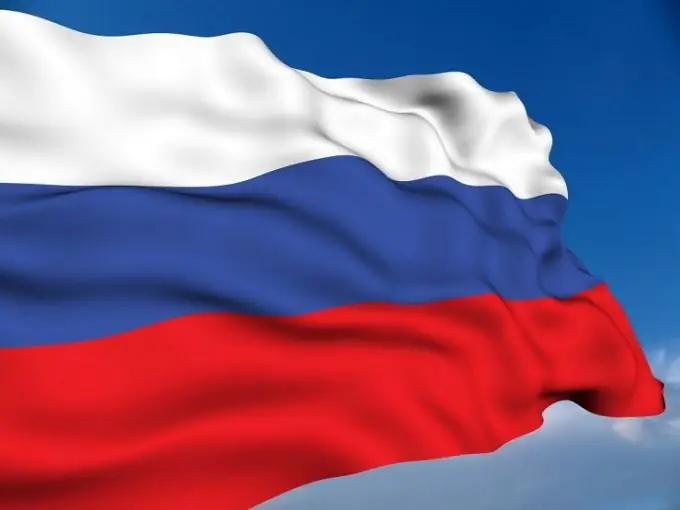- Author Nora Macey [email protected].
- Public 2023-12-16 10:17.
- Last modified 2025-01-23 08:48.
The white-blue-red tricolor became the state flag of Russia and replaced the red flag of the Union of Soviet Socialist Republics on August 22, 1991, in accordance with the resolution of the Supreme Soviet of the RSFSR. Now this date on the calendar of public holidays is celebrated as the Day of the State Flag of the Russian Federation. But the history of the tricolor cloth began much earlier.

How the Russian tricolor appeared
In the late 1660s, by order of Tsar Alexei Mikhailovich, father of the future Russian Emperor Peter I, the construction of a warship began, which was given the formidable and proud name "Eagle". By the end of construction, the question arose about the "identification marks" required for any vessel. Banners, which at that time were used as royal standards, were not suitable for this - a flag should fly on the flagpole of the ship so that it could be seen from afar, and its belonging was not in doubt. The tsar had to choose the colors, and by his decree he orders to release the fabric of three colors "wormy, white and azure" - red, white and blue for the sewing of banners.
At that time, historians believe, Alexei Mikhailovich made his choice not by chance. Red is the color of blood, it has always been considered a symbol of courage, courage, readiness to defend their homeland. Blue was considered the color of the Mother of God, and she has always been perceived by the Orthodox population of the country as the patroness of Russia. White color is a symbol of purity of soul and thoughts, nobility. The banners in the center depicted an eagle - the bird that gave the name to the ship.
The colors of the banners that fluttered on the masts of the first Russian military vessel were subsequently designated by Peter I by a decree of January 20, 1705, and they began to be used in official symbols, besides them, black and gold (yellow) colors were also referred to. The tricolor flag became a symbol of the merchant fleet, and the "St. Andrew's" flag was used on military ships - a blue diagonal cross on a white background. And the eagle also remained as a symbol of the state and, after the entry of Little Russia into Russia, it became two-headed.
The return of the Russian tricolor
After Peter I, his successors preferred to use the colors white, black and yellow as statesmen, which coincided with the colors of Prussia, from where brides were supplied to the imperial house. Black and gold (yellow, orange) became the colors of the Order of Military Valor - the St. George Cross, named after St. George.
In the days before the coronation of Nicholas II in 1896, it was decided to return the “Peter's” state colors, and a new symbol of the Russian state was approved - the white-blue-red tricolor, in the upper left corner of which was a black two-headed eagle on a gold background. But the meaning of traditional colors has been changed. Red began to symbolize statehood, white - independence and freedom, blue remained a symbol of the Virgin. But there was also another version of symbolism, in which these colors united three kindred peoples. White Russia - Belarus, blue - Little Russia (Ukraine), and red - Great Russia (Russia).






